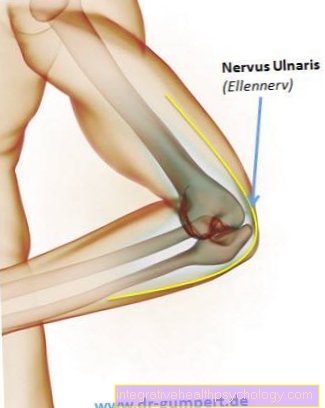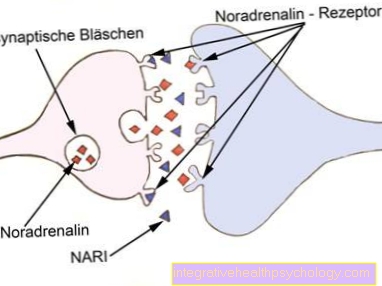Can you do sports with atrial fibrillation?
introduction
Exercise and regular exercise are good for the cardiovascular system and can provide effective relief for patients with atrial fibrillation. There are recent studies that confirm that in people with atrial fibrillation, a gain in fitness can lead to a significant improvement in symptoms. Sport counteracts obesity, heart problems and vascular calcification, i.e. the risk factors for coronary artery disease (CHD) and atrial fibrillation. People with atrial fibrillation can and should do sport, but it depends on the right sport.

What sports can I do with atrial fibrillation?
What kind of sports are allowed for atrial fibrillation depends on the therapy of the disease. In principle, low-intensity sports are well suited: walking, jogging, cycling, ergometer training, cross-country skiing, gymnastics, gold and sports games such as table tennis are welcome.
If one decides on an ablation treatment (sclerotherapy), the patient can already do all kinds of sports a few weeks after the procedure. But you have to pay attention to whether other medications are being taken that may reduce performance. Patients who suffer from diseases such as CHD (coronary artery disease) or cardiac insufficiency in addition to atrial fibrillation should aim for regular endurance exercise. For example, brisk walking, cycling, exercise bikes or Nordic walking for 30 minutes three to five times a week.
What sports should I not do with atrial fibrillation?
If you take medication, so-called antiarrhythmics, to stabilize the heart rhythm, competitive sports and intensive recreational sports (e.g. marathons) are not allowed.
Patients who take anticoagulants (e.g. Marcumar®) should avoid sports with a high risk of injury, as the risk of bleeding is increased. Skiing, snowboarding, mountain biking, climbing, horse riding, football, handball, martial arts and similar sports should be avoided at all costs as part of blood-thinning medication.
If you suffer from heart disease in addition to atrial fibrillation, physical performance and possible sports should be discussed with the cardiologist beforehand.
Can exercise be fatal with atrial fibrillation?
In Germany, several hundred people die every year from sudden cardiac death due to cardiac arrhythmias while exercising. However, ventricular fibrillation is usually responsible for this, not atrial fibrillation. This is especially the case with people who are not yet aware of previous heart diseases that cause arrhythmias.
If one suffers from known atrial fibrillation, it is important to implement the correct treatment and to do suitable sport. If you do appropriate sports and are well adjusted with the appropriate therapy, it is not fatal, it is even good for your health.
Atrial fibrillation death while exercising is very unlikely, and if it does occur the condition is usually neither known nor treated.
Does the atrial fibrillation limit my ability to exercise?
Whether the atrial fibrillation affects performance in sports depends on the type of sport. In endurance sports (running, cycling, cross-country skiing) the cardiovascular system is stressed and there is a greater pumping capacity of the heart and an increased pulse, while the blood pressure rises only slightly. Atrial fibrillation often noticeably reduces the performance of endurance sports by 5 to 15%, especially if the heart is previously damaged.
In contrast, strength training (e.g. training with weights or equipment) is hardly restricted. In mixed forms of sporting activity (rowing, play sports, alpine skiing, volleyball), performance can be restricted to different degrees by atrial fibrillation.
Do athletes get atrial fibrillation more often than non-athletes?
There are so-called predictors for atrial fibrillation in athletes. Such possible predictive values for the occurrence of atrial fibrillation in sports of an athlete are one
1.) slow heart rate
2.) a large left atrium.
These two findings are often found in otherwise healthy endurance athletes. They favor the occurrence of atrial fibrillation. However, it cannot be said that athletes get atrial fibrillation more often than non-athletes because the causes of the disease are extensive. An unhealthy lifestyle with obesity and poor diet promotes the development of CHD (coronary artery disease), the main risk factor for the development of atrial fibrillation.
As an athlete, how do I know that I suffer from intermittent / paroxysmal atrial fibrillation?
Sudden, paroxysmal (paroxysmal) atrial fibrillation can manifest itself in a very fast, irregular pulse. A conspicuous heart rate can show up as a signal on the heart rate monitor or the heart rate monitor. If you measure the pulse manually, i.e. even with your finger on the artery on the wrist, you can feel an irregular (arrhythmic) pulse of varying strength. Some athletes also describe a noticeable drop in performance when atrial fibrillation occurs.





























